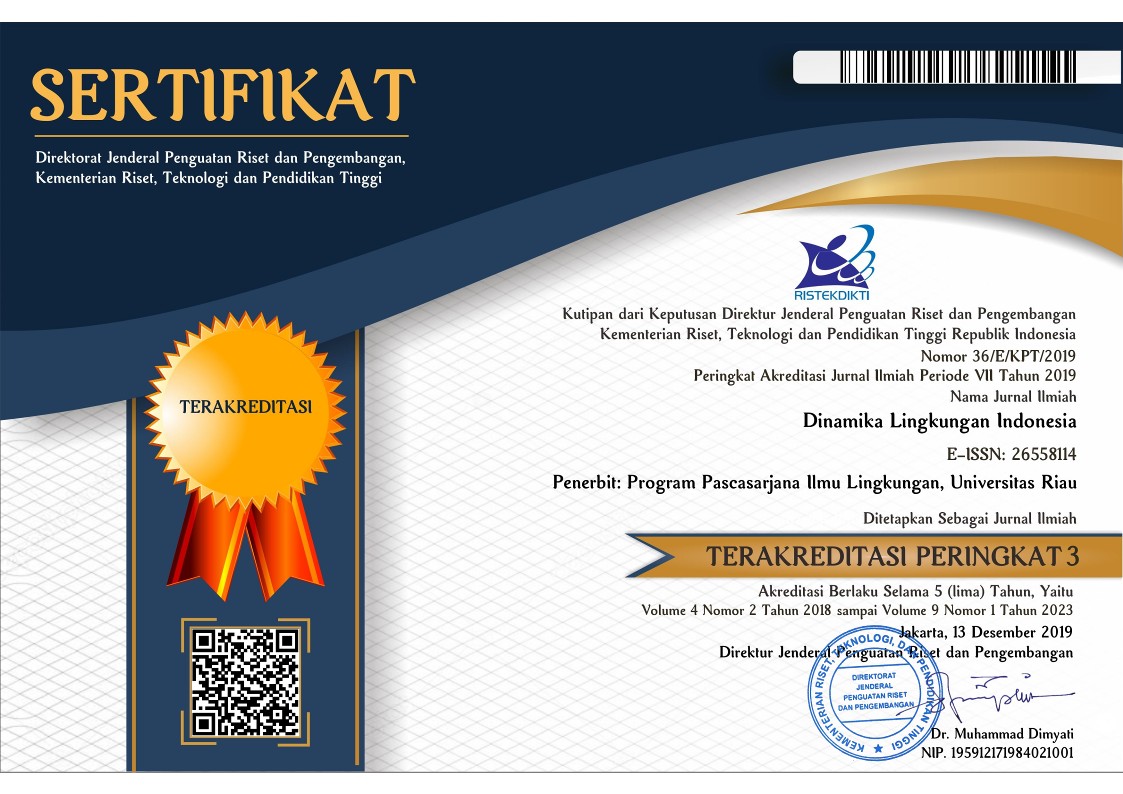Implementasi Manajemen Koridor Ekologi Taman Nasional Gunung Halimun Salak
Abstract
Habitat fragmentation in ecological corridors is a threat to preserving habitat and animals. Habitat is vital as a corridor to support animal mobility and migration patterns in preventing meta-population. The 1 km long Luewiliang Bogor currently threatens the habitat of the Mount Halimun Salak corridor – Cipeutey Sukabumi road access. This research examines endemic animals, flagship spesies, and conservation category animals in their habitat. The corridor area of this research location, reaches 20 km2 in Cianten village, Bogor Regency. Line transect, camera trap, integrated remote sensing methods are methods used to monitor animal movements. This research consists of animal inventory research on the distribution of endemic and threatened animals and research into motor vehicle disturbance. From the observations and research carried out, seven mammal species were obtained, namely: Deer (Muntiacus muntjak), Coconut Squirrel (Callosciurus notatus), Javan Gibbon (Hylobates moloch), Root Civet (Arctogalidia trivirgata), Surili (Presbyris comata), Leopard (Panthera pardus), Mouse Deer (Tragulus napu) and 6 types of birds, namely: Prenjak Bird (orthomus sp), Liitle Honey Bird (Anthrepetes simplex), Butbut Bird (Centrpus sinensis), Javanese Eagle (Spezaitus bartelsi), Brotok Eagle (Nisaetus cirrhatus) and Tuluk Tumpuk Bird (Psilopogon javensis). Motorized vehicles average 15 vehicles/hour. Transportation type; trucks, buses, cars, motorbikes.
Keywords
Full Text:
PDFReferences
Beier, P. (2019). A rule of thumb for widths of conservation corridors. Conservation Biology, 33(4), 976-978. https://doi.org/10.1111/cobi.13256.
[BTNGHS] Balai Taman Nasional Gunung Halimun Salak. (2022) Rencana Pengelolaan Taman Nasional Gunung Halmun Salak 2007–2027. Sukabumi: Balai TNGHS.
Firmansyah, I., Budiasa, I. W., Paulus, C. A., Rachman, D. A., Sukwika, T., & Hermawan, E. (2023a). Modelling of carrying capacity at komodo national park: system dynamics approach. Journal of Natural Resources & Environment Management)/Jurnal Pengelolaan Sumberdaya Alam dan Lingkungan, 13(3). https://doi.org/10.29244/jpsl.13.3.492-506.
Firmansyah, I., Budiasa, W., Paulus, C. A., Rahman, D. A., Sukwika, T., & Hermawan, E. (2023b). Ecosystem Services and Environmental Benefit Values on Komodo Island and Padar Island in Komodo National Park, Indonesia. Environmental Engineering & Management Journal (EEMJ), 22(7). http://doi.org/10.30638/eemj.2023.103.
Garrah, E., Danby, R. K., Eberhardt, E., Cunnington, G. M., & Mitchell, S. (2015). Hot spots and hot times: wildlife road mortality in a regional conservation corridor. Environmental Management, 56, 874-889. https://doi.org/10.1007/s00267-015-0566-1 .
Hakim, F. (2018). Strategi Kebijakan dalam Restorasi Koridor Taman Nasional Gunung Halimun Salak (Studi Kasus di Wilayah Kabupaten Sukabumi). (Doctoral dissertation). Bogor: Institut Pertanian Bogor.
Hardina, K. (2019). Kriteria Habitat Sebagai Tempat Pelepasliaran Elang Brontok (Nisaetus cirrhatus, Gmelin 1788) di Kawasan Taman Nasional Gunung Halimun Salak. (Doctoral dissertation). Bogor: Institut Pertanian Bogor.
Hilty, J. A., Keeley, A. T., Merenlender, A. M., & Lidicker Jr, W. Z. (2019). Corridor ecology: linking landscapes for biodiversity conservation and climate adaptation. Island Press.
Krosby, M., Breckheimer, I., John Pierce, D., Singleton, P. H., Hall, S. A., Halupka, K. C., ... & Schuett-Hames, J. P. (2015). Focal species and landscape “naturalness” corridor models offer complementary approaches for connectivity conservation planning. Landscape ecology, 30, 2121-2132. https://doi.org/10.1007/s10980-015-0235-z.
Martinez & Montoya-Greenheck. (2020). The socioecological evolution of a biological corridor: A 15-year Case Study of the Alexander Skutch Biological Corridor in Southern Costa Rica. Journal of Rural and Community Development 16, (1), 37–67 https://doi.org/10.1712/jrcd.16.1.37-67.
Moreno R, Guerrero-Jimenez CJ (2019). What about biological corridors? A review on some problems of concepts and their management. BioRisk, 14: 15–24. https://doi.org/10.3897/biorisk.14.32682.
Sahab, A., Darusman, D., & Muladno, M. (2015). Penguatan Pengelolaan Taman Nasional Gunung Halimun Salak Melalui Pemberdayaan Masyarakat Berbasis Pengembangan Peternakan Ruminansia. Risalah Kebijakan Pertanian dan Lingkungan Rumusan: Kajian Strategis Bidang Pertanian Dan Lingkungan, 2(2), 87-97. https://doi.org/10.29244/jkebijakan.v2i2.
Tripathy, B.R.; Liu, X.; Songer, M.; Zahoor, B.; Wickramasinghe, W.M.S.; Mahanta, K.K. (2021). Analysis of Landscape Connectivity among the Habitats of Asian Elephants in Keonjhar Forest Division, India. Remote Sens. 13: 4661. https://doi.org/10.3390/rs13224661.
Yumarni, Y., Alikodra, H. S., Prasetyo, L. B., & Soekmadi, R. (2015). Analisis populasi Owa Jawa (Hylobates Moloch Audebert 1797) di koridor Taman Nasional Gunung Halimun Salak. Media Konservasi, 16(3), 231-244. https://dx.doi.org/10.29243/medkon.16.3.231-244.
DOI: http://dx.doi.org/10.31258/dli.11.1.p.43-48
Refbacks
- There are currently no refbacks.

This work is licensed under a Creative Commons Attribution 4.0 International License.





